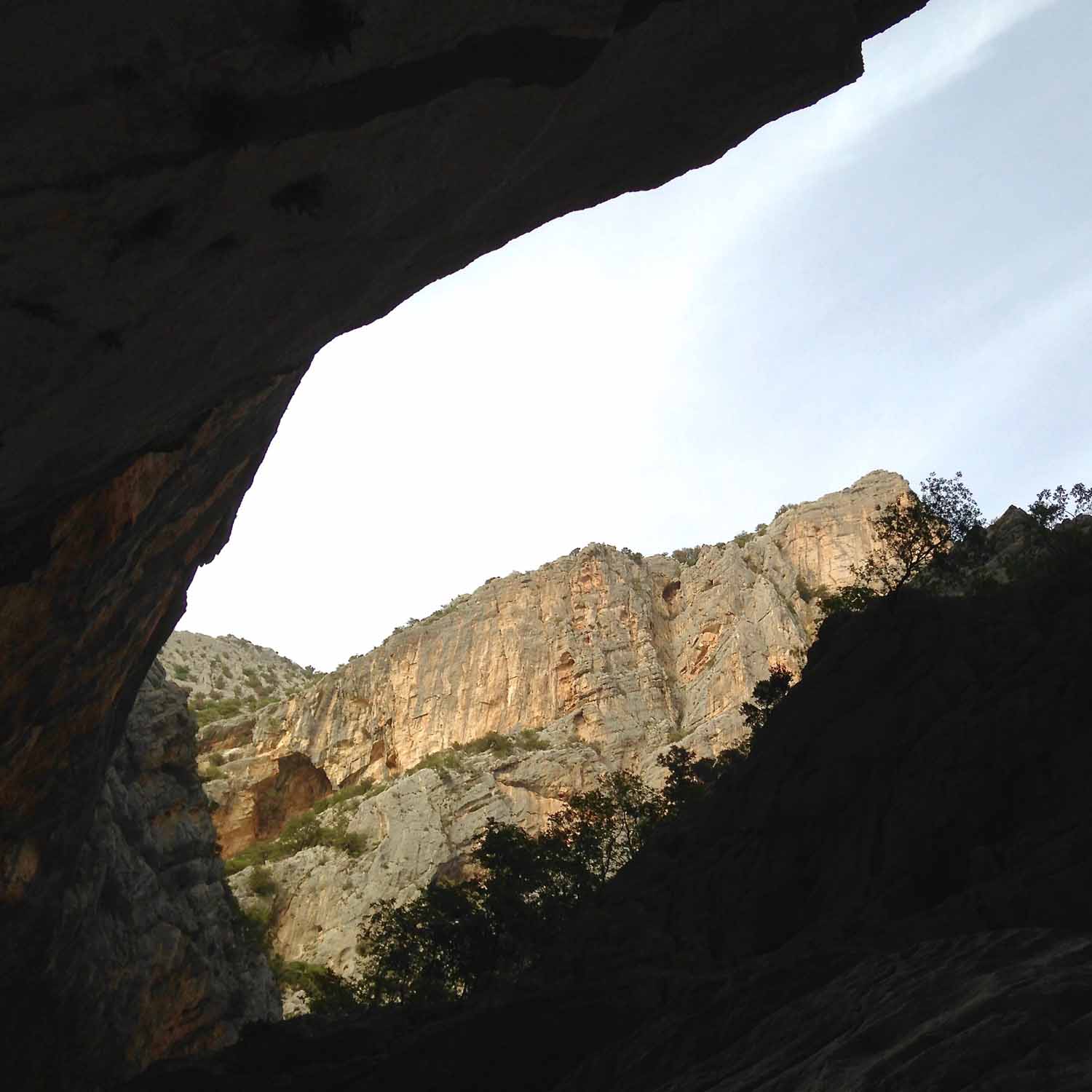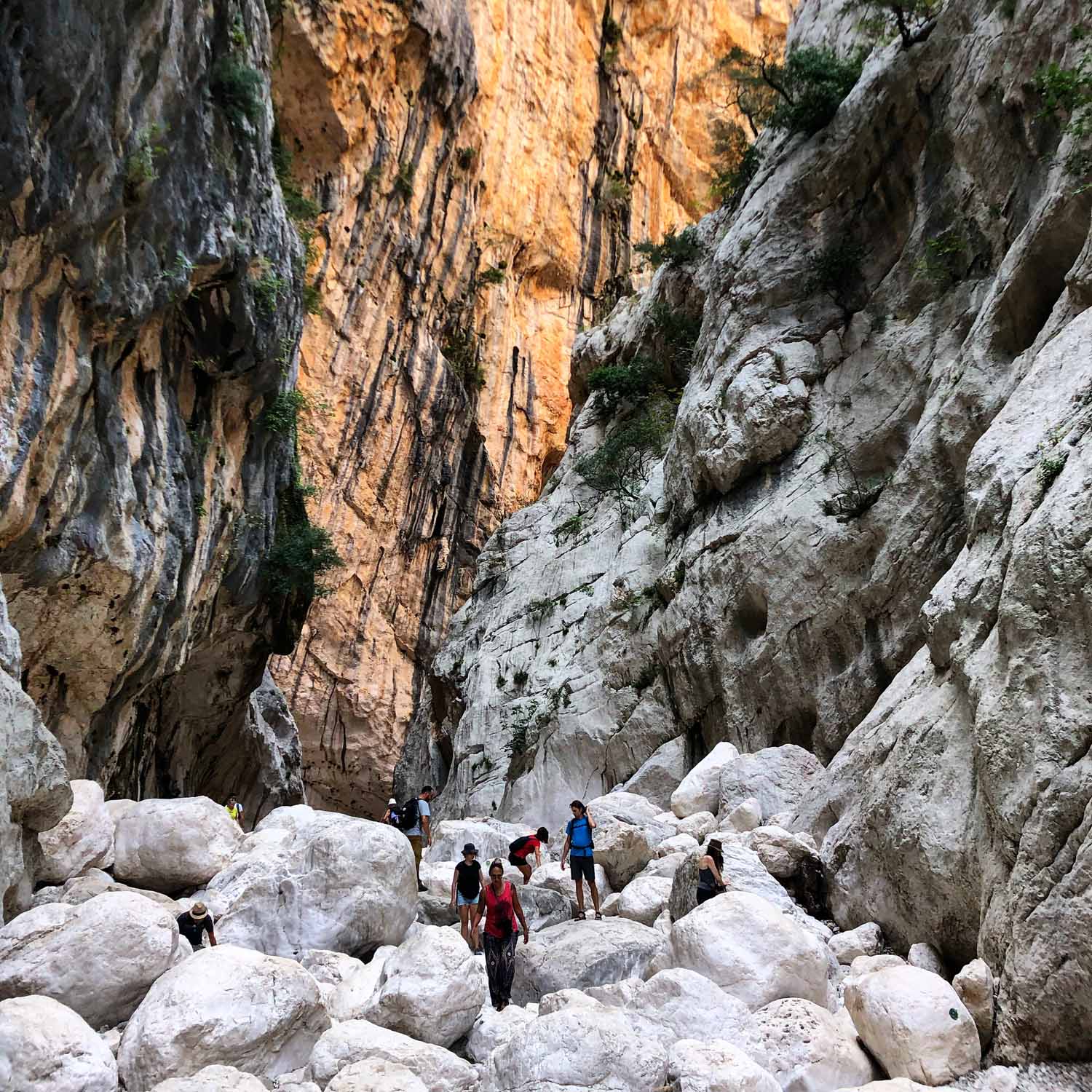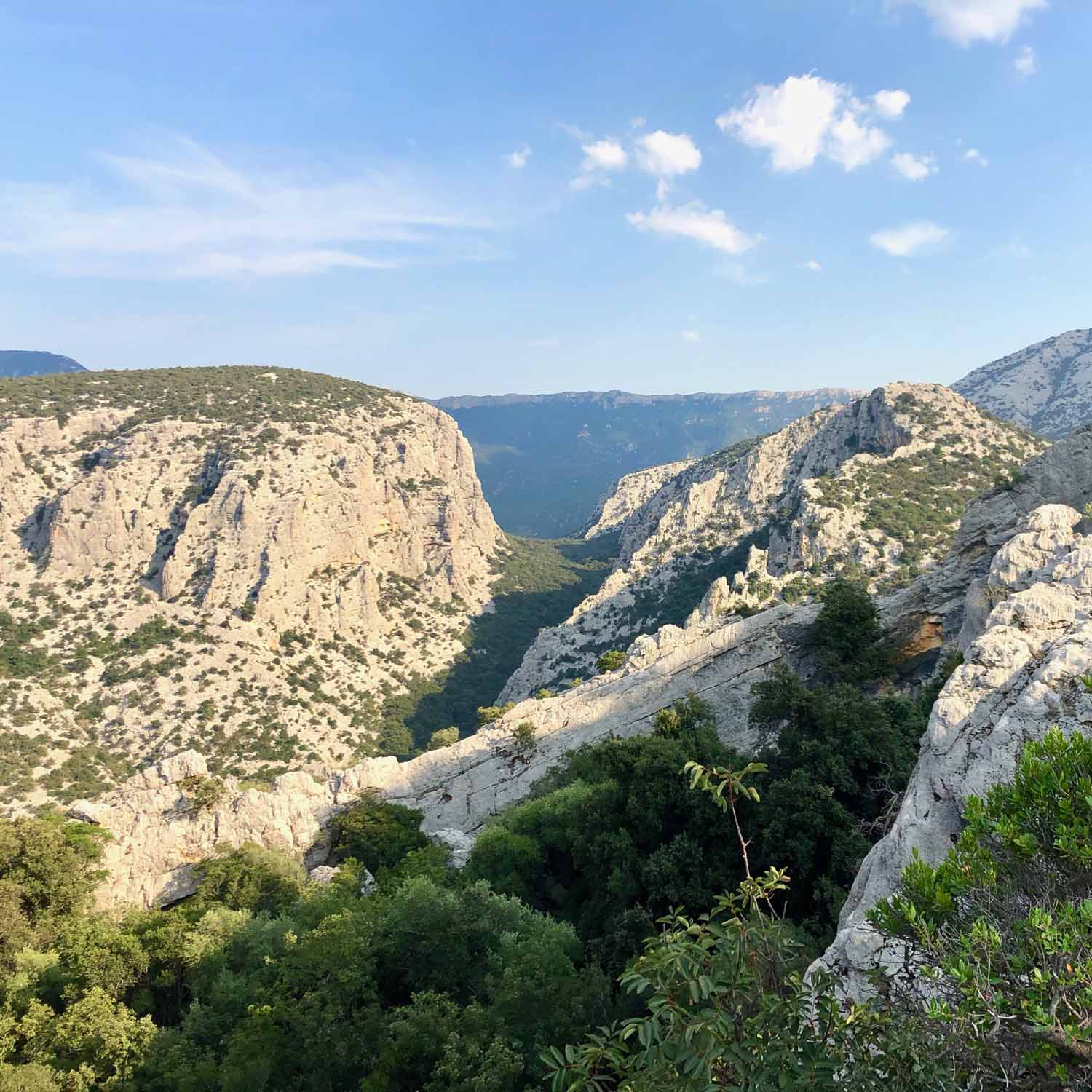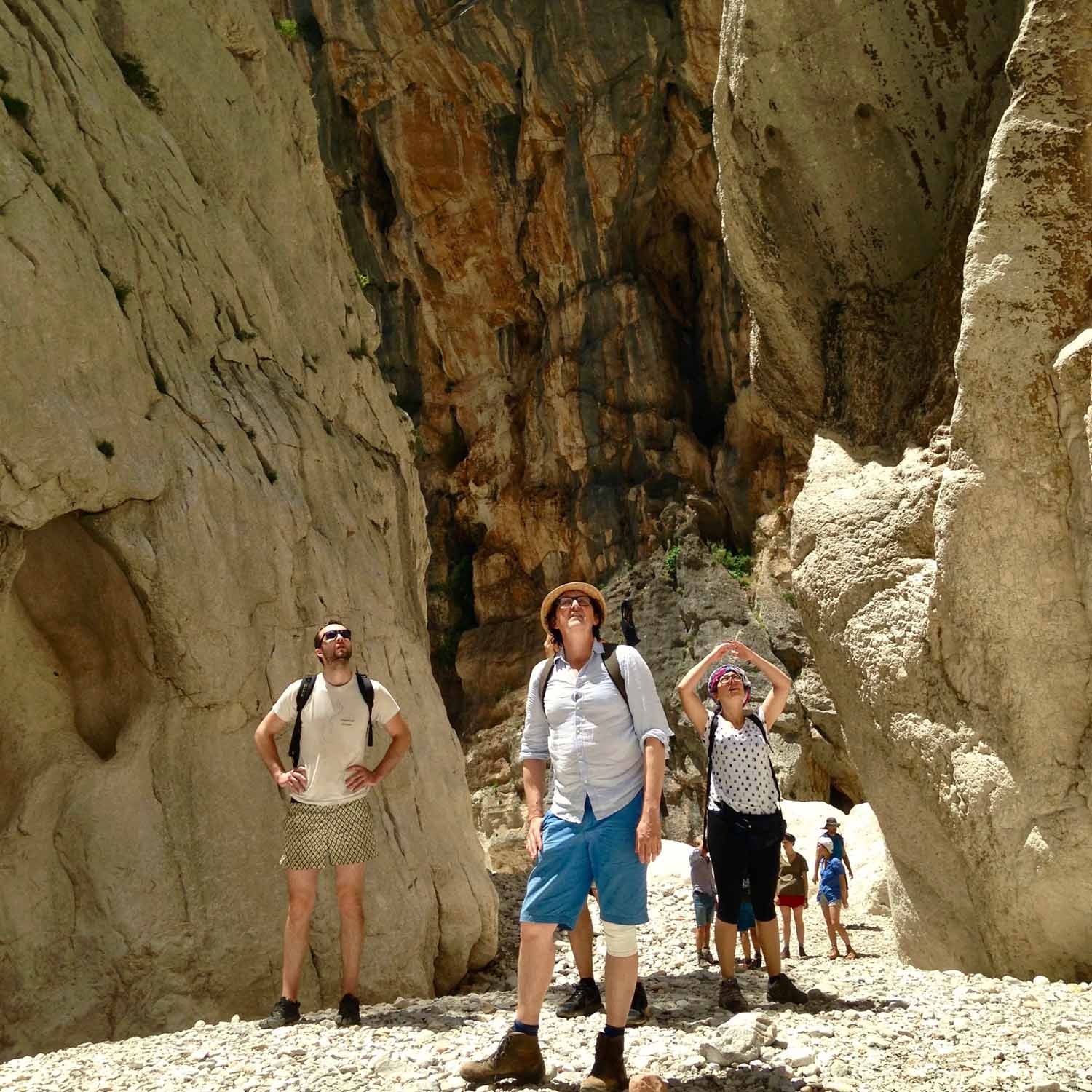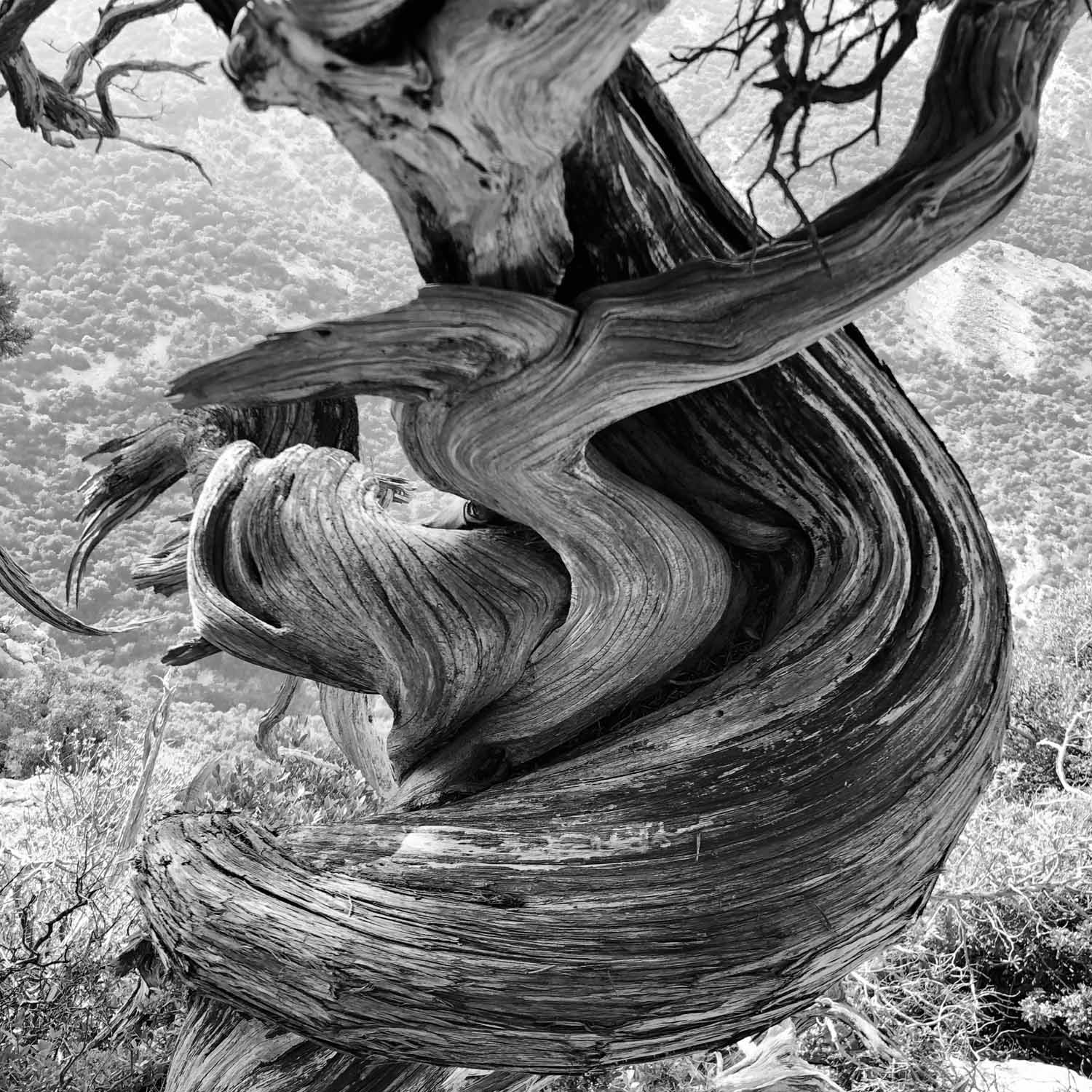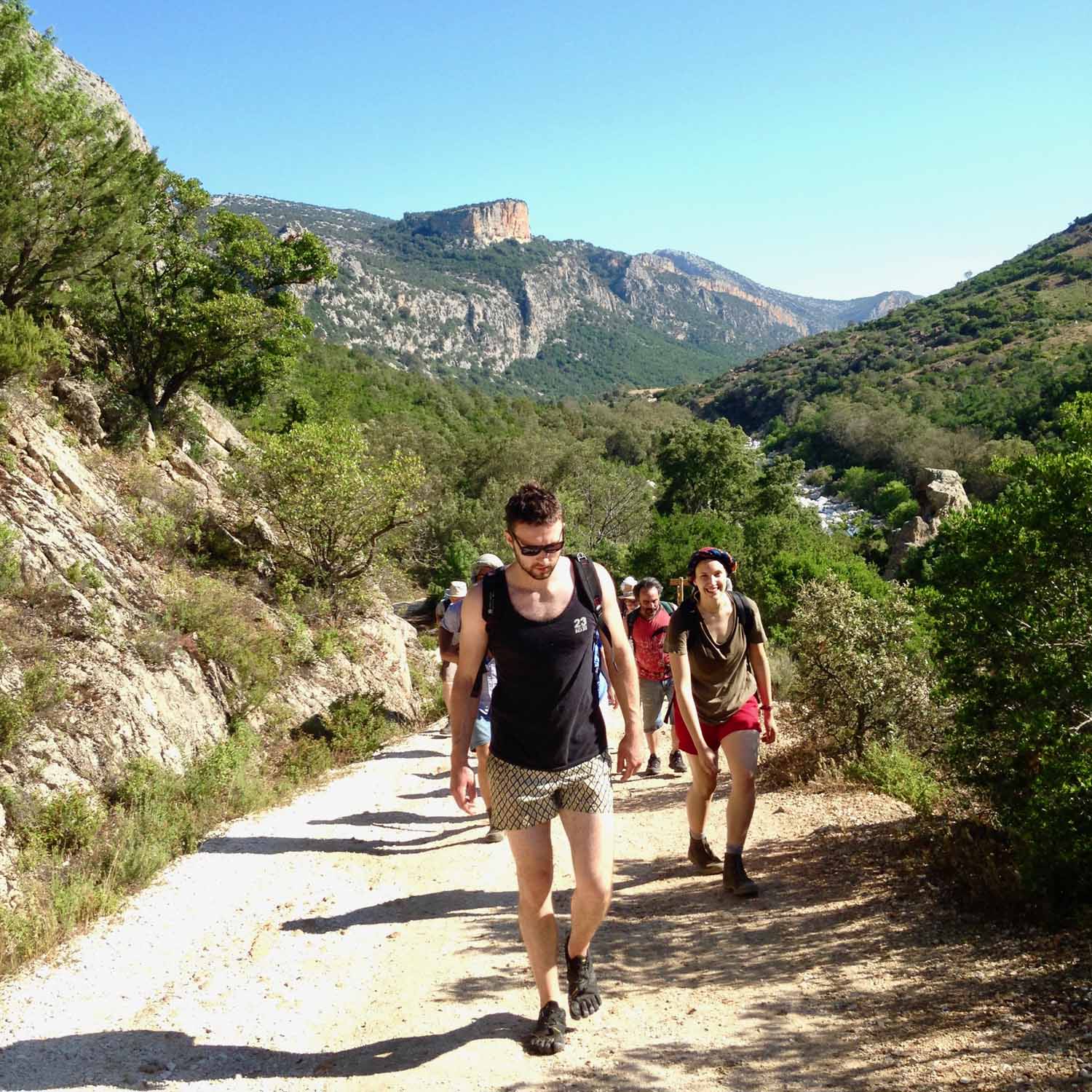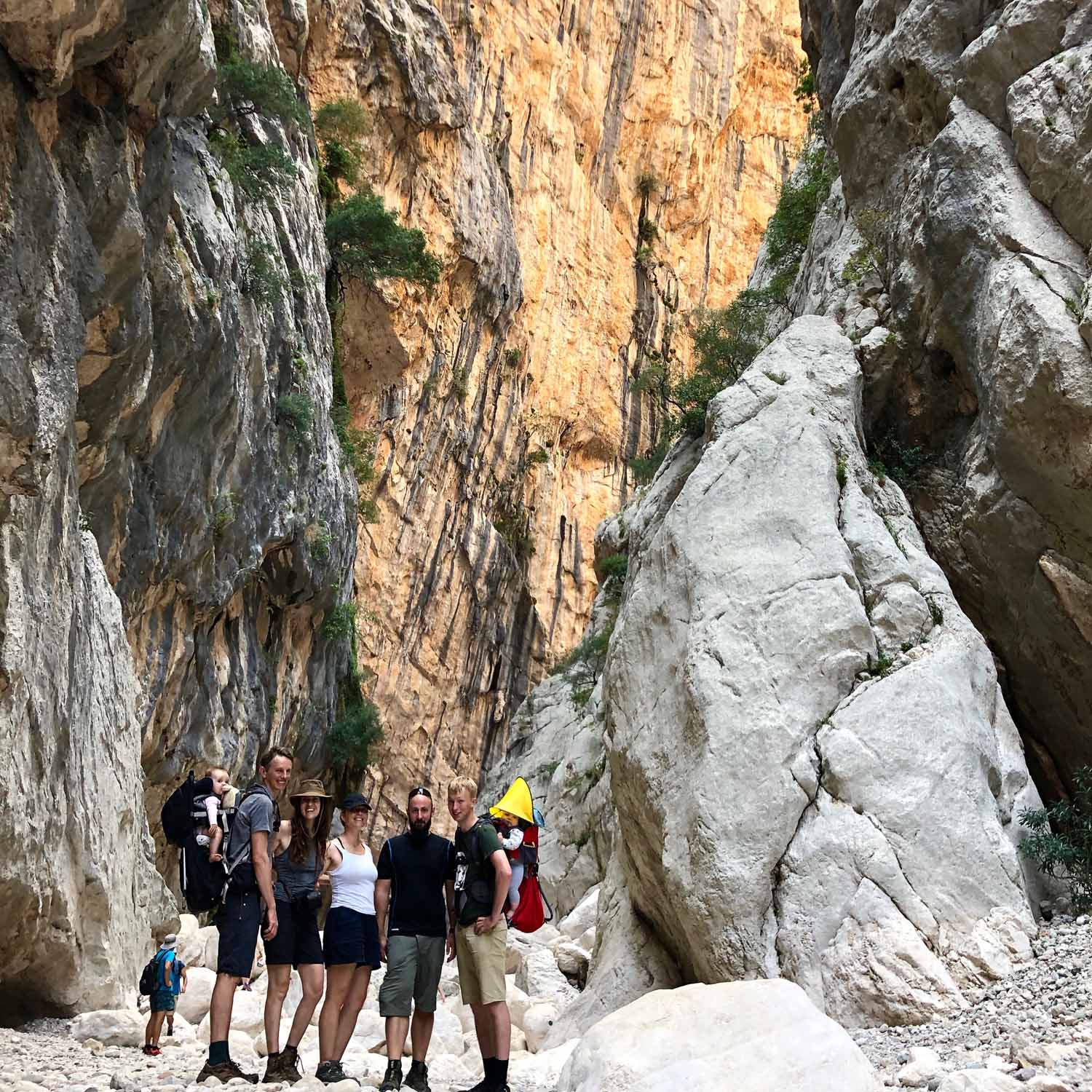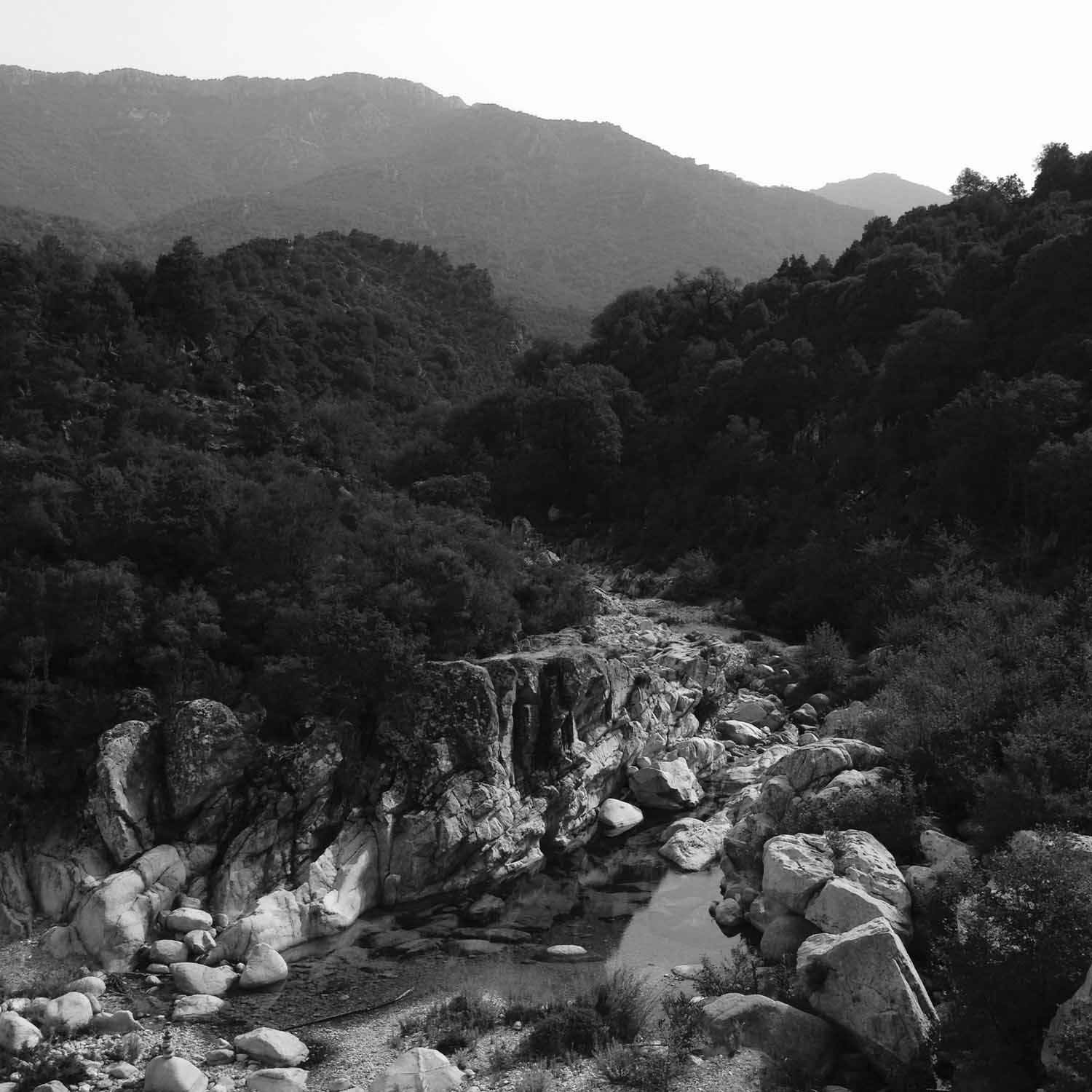Sardinia’s Grand Canyon
[Day 3]
by Rudston Steward
any still think of a trip to Sardinia as essentially a beach holiday, often limited to the glitzy north-eastern Costa Smeralda. Given that Sardinia boasts some of the most spectacular beaches on the planet the association is understandable. But to consider only its famed white-sand beaches is to do the island an injustice, for Sardinia is a large, complex, varied and almightily beautiful region. It demands to be explored slowly, and in depth—preferably on foot.
Far from the blingy northern shore, another Sardinia—a land of fascinating cultures, striking geography, dense history, mysterious language, and astonishing arcane traditions still very much alive in the 21st Century—lies inland. One of its strongholds is an area called Barbagia (named thus by the all-conquering Romans, who subdued the entire island in 238 BCE except for this no-fly zone in the mountainous interior, whose people they tried for 600 years, unsuccessfully, to control). And one of Sardinia’s greatest natural treasures is tucked away in Barbagia’s foothills, in a limestone-clad valley near the town of Dorgali: the Gola su Gorropu Gorge—a Sardinian Grand Canyon.
IN MIND-BOGGLING PLACES SUCH AS THESE THE YARDSTICK OF GEOLOGICAL TIME COMES IN HANDY FOR MEASURING THE SCOPE OF A HUMAN LIFE
We explore the canyon on Day 3 of our Supramonte Safari trip (roughly midway through our 5-day hike from the Supramonte mountains near Oliena to the coast at Cala Luna in the Gulf of Orosei). Seeing as there are no hotels close to the gorge we spend the night under canvas, camping on the banks of the Flumineddu River. After a morning dip and a bevy of breakfast espressos it’s a two-hour walk, contouring gently uphill along the riverbank, to the gorge’s entrance. It kinda sneaks up on you: you turn a corner, drop down steeply over a lip between ancient juniper trees, and there it is: the sheer 400-meter vertical face of one of the deepest canyons in Europe.
Gorropu is more about spectacular depth than impressive length (it’s only about 5km long). At its narrowest the two faces are just meters apart, rising like twin geological towers forged in the Palaeozoic Era, with gargantuan white boulders strewn at their base. Looking up at the sky from down here—an insignificant ribbon overhead, apparently on the verge of being crushed between the canyon’s two phalanxes of rock—is a useful exercise and reminder. In mind-boggling places such as these the yardstick of Geological Time comes in handy for measuring the scope of a human life—and grasping its proper, undeniably rather modest, import.

